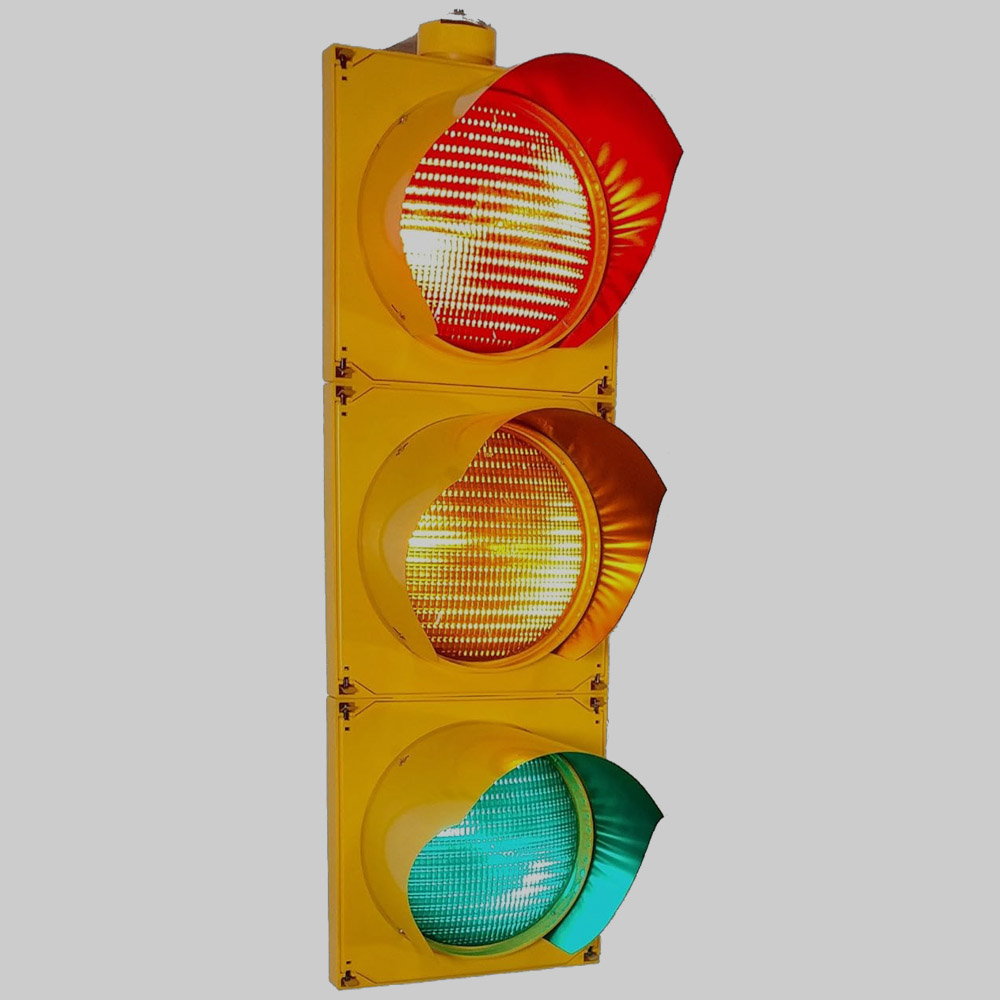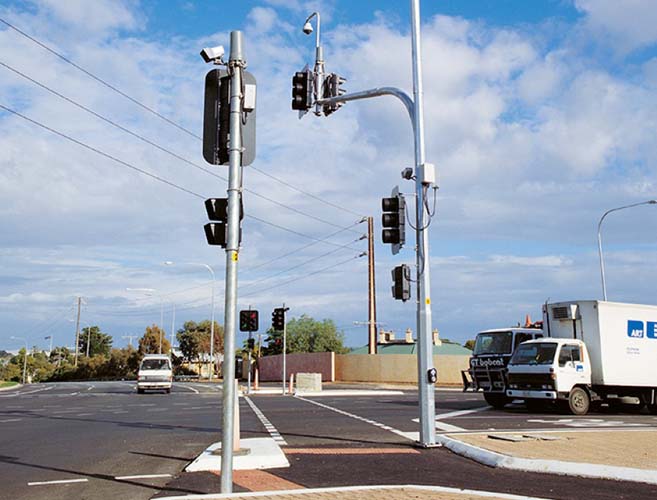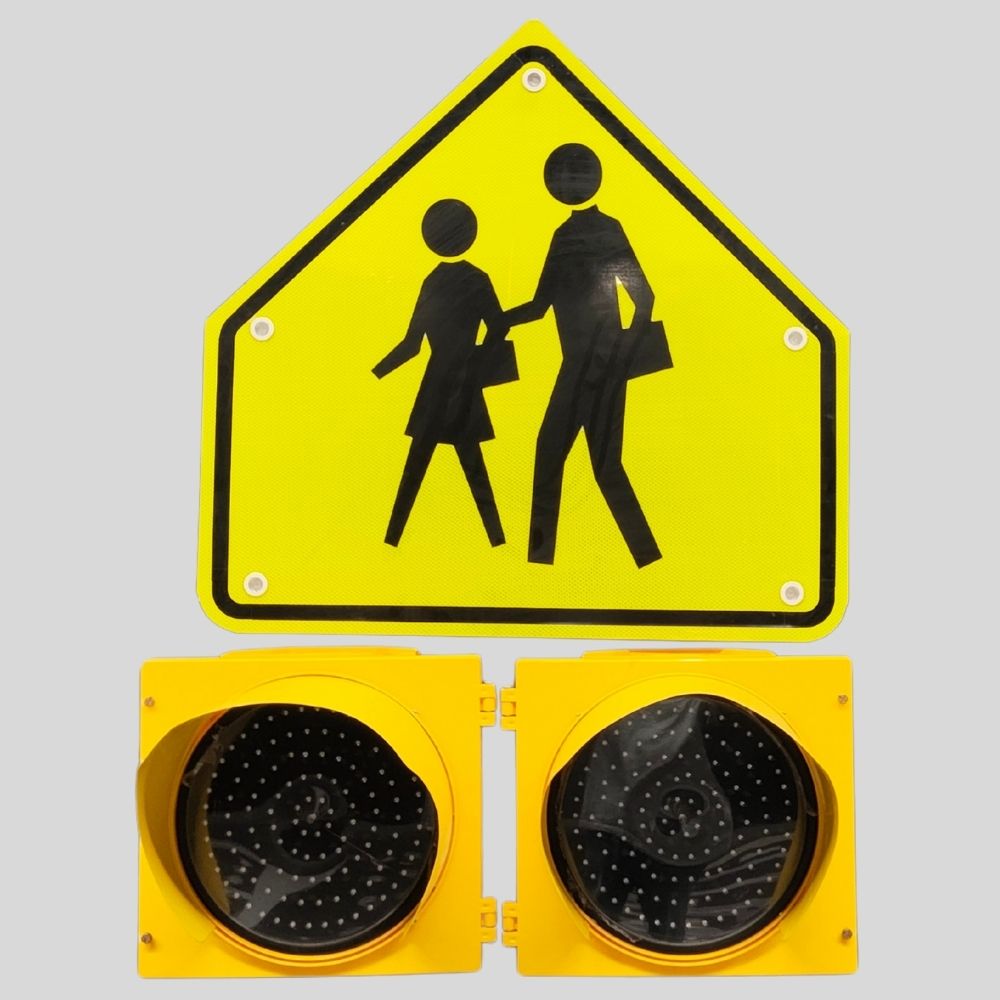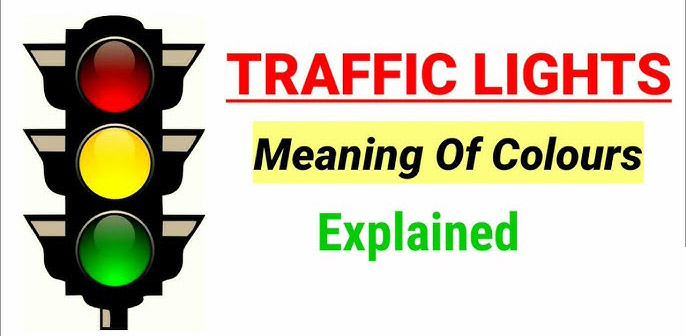A traffic light is basically a part of the traffic signal system. However, in many states, both “Traffic Light” and “Traffic Signal” terms are alternatively used to refer to the three different-colored traffic lights. Actually, traffic signal is the broader term that encompasses several types of signals given on the road.
In this blog post, we will explore what is traffic light vs traffic signal, the breakdown of core components key differences and the common misconceptions about traffic signals. So without further ado, let’s get started.
Traffic Light vs Traffic Signal: Key Differences
What Is a Traffic Light?
A traffic light, often known as traffic signal light or stoplight, is an electrical traffic control equipment, which features three LED lights (red, amber & green). This is generally installed at intersections to direct drivers and pedestrians and reduce road accidents and fatalities.

What Is a Traffic Signal?
A traffic signal refers to the entire traffic management system that is used on roads to manage the signal’s timing and coordination at intersections, to safely direct all types of traffic including vehicles, pedestrians, and cyclists on the roads.
In fact, a police officer using hand gestures, a whistle, or a baton/light stick on the road to redirect traffic is also a traffic signal (manual).

Why People Often Confuse Traffic Lights and Traffic Signals?
These two terms are used interchangeably by citizens across several states. However, it’s crucial to understand the difference that traffic lights mean the red-yellow-green signal lights, while traffic signals refer to the entire system and all electrical components included in the traffic management system, including traffic lights.
Components Breakdown of Traffic Light vs Traffic Signal
Traffic Light Includes:
Signal Heads:
The traffic light’s signal head is the top structure. This head has three big holes, in which three different colored LED lights are mounted.

Traffic Light LED Bulb (LEDs or incandescent)
Red, amber/ yellow, and green LED bulbs are mounted inside the signal heads, which are then connected to the controller box and power source.

Mounting Equipment (traffic signal poles, brackets)
This is generally the vertical metal or steel pole, to which the signal head is mounted with the help of screws and brackets. Sometimes, surveillance cameras are also mounted on poles to monitor vehicles violating traffic lights.

A Control Unit(Traffic Signal Controller Closure)
The controller is basically the brain of traffic lights, which is typically mounted on the ground and connected to a power source. This let facilities manually program the traffic lights’ timing or regulate the light sequencing automatically.

Traffic Signal Includes:
As we mentioned earlier that traffic signal is the entire system that manages and coordinates traffic flow, so here’s a compiled list of all the components or systems it includes:
Traffic lights:
These are the bright lights we generally see at intersections. Red means stop, yellow means proceed with caution as light is soon to turn red, green means safe to proceed.
Signal Controller Units:
This is the brain of the traffic signal system. It controls when and how long each light stays red, yellow, or green.
Vehicle Detectors/Sensors
They are typically radar or infrared sensors that detect vehicles presence waiting at a red light. And when a vehicle is detected, they relay a request to a controller which then changes the lights.
Pedestrian Signals
They are circular, feature a red and green light along with any of the following pedestrian-icons: “Walk” (a person walking), “Walk” (a person walking) or “Don’t Walk” (a raised hand) – based on traffic conditions. They’re generally installed at crosswalks and intersections to signal pedestrians when they should move.

Push Buttons (for Pedestrians)
Push buttons are generally installed near crosswalks connected to traffic lights. These allow pedestrians to request a walk signal. Once pressed, the controller instantly schedules a safe walk phase in the signal cycle.
Countdown Timers
These are installed in high-traffic areas. They show drivers and pedestrians how many seconds are left before the signal changes so they can prepare in advance.

Communication Systems
These microcontroller systems are used to sync multiple traffic signals and traffic lights across roads. For example, if a green light starts on one intersection, nearby signals get alerted to adjust the signal accordingly, so vehicles don’t stop at every light.
Poles and Mounting Structures
These support the traffic lights, sensors, and traffic signage in place so they stay stable in harsh weather conditions and are visible to road users. Sometimes, trailers are also used to temporarily fulfill traffic signals’ mounting needs.
Signal Timing Plans and Operation Logic
This is the logic that tells traffic signals or lights how to adapt and detect traffic volume and patterns. Typically, there are two ways in which traffic signals operate:
- Manual/Fixed (same cycle every fixed period)
- Adaptive/Smart (use sensors to detect real-time traffic and change signals based on data)
5 Common Misconceptions About Traffic Signals
Misconception #1 Traffic Lights Are Switched off At Night
Some drivers think lights go dark at night and no longer apply, but that’s a completely wrong concept. Traffic lights are installed to operate and direct traffic 24/7. However, there are times when traffic lights can get damaged or black out due to power outages.
In such conditions, drivers should act responsibly and always stop at an intersection (considering red), check for other drivers and pedestrians and then proceed with caution.
Misconception #2 Yellow Light Is Meant to Speed Up to Make it Through Before Red
In fact, yellow traffic light means to drive with caution and be ready to stop as yellow light can anytime switch to red. That said, the yellow light is actually the warning sign to drivers to prepare to stop, not accelerate. Speeding over a yellow light is clearly a traffic violation, and you will be strictly punished.
Misconception #3 Traffic Lights Are Only For Drivers
Traffic lights are for every road user who is present on the road such as drivers, pedestrians, cyclists, bicyclists, police officers and even facilities working on the road. Traffic rules, also apply to all road users and adhering to them is mandatory for everyone to comply with law.
Misconception #4 Pedestrian Buttons Respond to Multiple Presses
Pressing the walk button more than once doesn’t speed things up, instead doing so can slow down or even cancel the request because the system registers your request once you press the button. So, when you press once, patiently wait for the signal to turn in your favor and then cross.
Misconception #5 Cities Intentionally Design Signals to Waste Public Funds
Cities design and install signals on roads to protect road users and reduce the chances of accidents, vehicle collisions and fatalities on the road. Even if you encounter malfunctioning traffic signals, this doesn’t mean government has wasted public funds, instead, inefficiencies often happen due to limited funding, not intentional delays.
Final Word From JACKWIN
Traffic lights and other traffic signaling system is a powerful and advanced system that helps road users to safely use roads, cross intersections and crosswalks, avoiding accidents and vehicle collision risks. However, a traffic signaling system cannot solely ensure your safety on the road. You should also need to do your part of staying attentive on road and obey all traffic signals properly.
FAQs about Traffic Lights vs Traffic Signal
-
What is the purpose of traffic signals?
The fundamental purpose of traffic signals is to control traffic at intersections and crosswalks so that vehicle and foot traffic can transition between lanes safely. Traffic signals also aid in reducing accidents risks and vehicle collisions.
-
Difference between traffic light vs stop light?
Traffic light is the physical traffic control device with red, yellow and green lights, while stop light basically refer to the red light on traffic lights – as red light means STOP.
-
Why traffic lights are red yellow and green?
Traffic lights use red, yellow, and green because these colors’ meaning are recognized universally. Red color is universally associated with danger – so red on traffic light signals stop. Yellow (or amber) means caution and green hint the safe so it signals go sign.
-
Is a stop sign a traffic control device?
Yes, a stop signage is a traffic regulatory device. Where placed, this tells drivers to completely stop before entering the intersection and when the intersection is completely clear, only then move.
-
Is a pedestrian signal a traffic signal?
Yes, a pedestrian signal with a WALK or Don’t WALK icon is a traffic signal that tells pedestrians when it’s allowed and safe to cross the intersection and when it’s not.
-
What did the first traffic light look like?
The first traffic light, which was introduced back in 1868 in London, looked very similar to railway signal design with two arms, that were used to give stop and go signals.
-
Why were traffic lights invented?
In 1868, traffic lights basically invented to eliminate the need for police officers to manually control the traffic flow. Because at that time traffic volume had increased significantly, which led to frequent collisions and accidents and that’s why traffic lights were invented to create order.
-
What is traffic light’s meaning of colors?
Green traffic light signal it’s safe to move. While yellow signal light drive with caution and be prepared to stop very soon and red traffic light means come to a complete stop.

-
What should you do if a traffic signal is malfunctioning?
When a traffic signal has malfunctioned, you should exercise caution even more than usual. In such a case, ideally, you should stop at the intersection, look around for any turning vehicles or pedestrians, and when no traffic is turning and the intersection is clear, only then proceed.
-
When traffic signals are not working, how to proceed?
If a traffic signal is not working, treat the intersection as four-way stop – come to a complete stop at the intersection, yield for other vehicles and pedestrians (if there are any) and cross once the intersection is clear.
-
What happens if there are no traffic signals?
If you ever encounter an intersection with no traffic signal, imagine a traffic signal there and act accordingly. By that we mean, proceed with caution and follow the right-of-way rules. The right-of-way rules tell that vehicles or pedestrians already in or closest have the priority to cross first.


-80x69.png)

